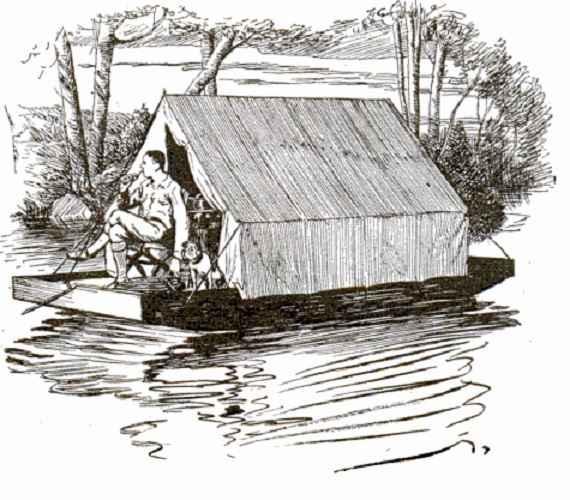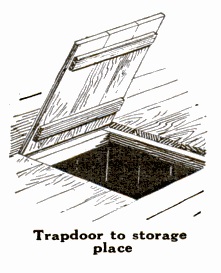 A hundred years ago, “the newest way of camping is to pitch a tent on a barge,” and the August 1923 issue of Popular Mechanics showed you just how to do it. The construction article, penned by “widely known authority on outdoor life” Stillman Taylor, notes that the floating camp has many unique advantages. It was easy to build and not expensive, and provided a good comfortable canvas home with large storage places. And whenever the camper felt like picking up and changing camp, he could easily drift with the current and wind to a new spot.
A hundred years ago, “the newest way of camping is to pitch a tent on a barge,” and the August 1923 issue of Popular Mechanics showed you just how to do it. The construction article, penned by “widely known authority on outdoor life” Stillman Taylor, notes that the floating camp has many unique advantages. It was easy to build and not expensive, and provided a good comfortable canvas home with large storage places. And whenever the camper felt like picking up and changing camp, he could easily drift with the current and wind to a new spot.
 The camping scow shown here was good for many years of service. It was hauled out of the water each year and stored, bottom up, out of the reach of ice. The boat featured plenty of storage space, including a waterproof box accessible through a trap door in the tent floor.
The camping scow shown here was good for many years of service. It was hauled out of the water each year and stored, bottom up, out of the reach of ice. The boat featured plenty of storage space, including a waterproof box accessible through a trap door in the tent floor.
The scow would be hard to row with the tent set up, but was fairly easy to scull. Therefore, an oar lock or scull plate could be fixed to the roomy front deck.
Today, such a craft would undoubtedly need to be registered in most states, but this shouldn’t present a problem. In Minnesota, for example, a homemade boat over ten feet in length can be registered. But save the receipts for the materials, as you’ll need to present them, along with four photographs of the completed boat.
